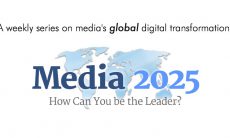The Reckoning
Call me nosy, but I couldn’t help but to listen in when my son and his two best friends were discussing their job prospects post college graduation next year. Their conversation went as follows:
Boy #1: “Yo, the company I’m interning with this summer just gave me a full-time offer.”
Boy #2: “Dude, that’s awesome”
Boy #1: “ Yeah, but the top is filled with a bunch of white guys. No diversity at all. And their board has no women or people of color.”
Boy #3: “That sucks. They know that’s bad for business, right?”
As the conversation went on, these three white, straight, male economics majors agreed that unless companies make diversity a priority, they wouldn’t want to work there. As one of them said, “I want to be in an environment that challenges me to be better and allows me to learn. Working with a bunch of guys who look and think like me? Meh.” Call these young men naive, call them idealistic, or call them, as I do, the next wave of talent your company is going to want to hire.
Did you know that companies that put profits and people on a level playing field deliver a total return to shareholders 3x greater than their peers? “Inspiring Individuals is the New Competitive Advantage” – McKinsey
But the truth is, despite all of the upheaval we are experiencing right now in the world and the ongoing calls for change, companies are still resistant to do the work. Why? Because, as one CEO told me, “It’s uncomfortable.”
The result? In the past two weeks alone, we have seen case study after case study of companies hurting their businesses because they weren’t walking the talk when it comes to aligning their external branding with their workplace culture.
Case study #1: Fair Equity Should be Table Stakes
That’s the headline of the billboard that software start-up Carta displayed up and down Silicon Valley’s Highway 101. Carta makes software used by more than 14,000 companies, to manage data for stockholders. They built their marketing around the power and importance of fair compensation. But they weren’t walking the talk according to Emily Kramer, former VP of Marketing and current plaintiff in a lawsuit against the company. According to Emily Kramer, “Companies have an obligation to issue equity more fairly. That’s what Carta stood for, and I was really excited for the opportunity to tell that story.” Instead, she’s suing the company for gender discrimination and pay inequity. So the question at hands is whether your company is at risk?
Solution:
Commit to pay equity.
When it comes to fair pay, don’t just sign a pledge, deliver the results. Join Adobe, SalesForce, Nordstroms and many others and commit to pay equity with the Fair Pay Certification.
Case study #2: People Before Profits
That’s how REI has positioned itself since its origins in 1938 as an employee cooperative. But profits took center stage before the store reopening on July 4th weekend when an employee reported to her manager that she was positive for COVID-19. Her employer told her to keep quiet. Instead, she sent out a company wide message warning her colleagues they were at risk. The employees banded together and created an online petition accusing the co-op of “prioritizing sales above workers.” REI was forced to change its employee notification policy and is now managing its tarnished image across stakeholders.
Solution:
Commit to aligning people and profits. Your company should give employees a safe way for their voice to be heard to ensure you get the information you need in order to protect both of you.
Case study #3: Black Lives Matter, Or Do They?
This one isn’t in the headlines, it’s in the day-to-day reality of right now. A prospective client reached out to ask about our diversity and inclusion work. We shared our belief that diversity, inclusion, equity, and belonging are table-stakes for companies that want to succeed in the 21st century. We told them it doesn’t start with a one-off webinar, it starts with understanding where their company is and helping them get to where they need to be. It starts with data and understanding the lived experience of their employees. We provided them with a detailed proposal of how they could begin the journey to making sure culture is a competitive advantage. Their CEO took one look and said, “This is too much work. Can’t we just do a lunch and learn?”
Solution:
Commit to diversity and inclusion. Try to track your employee analytics. You can track your hiring, retentions, and promotions of your employees to ensure you are keeping up with diversity and inclusion in your workplace.
Saying one thing and doing another or hoping a one-off lunch to learn will make “this all go away” is not the answer. As a recent article in the Washington Post stated, “Pushed by employees in some cases, and in others by a fear of losing customers, corporations are being forced to examine their roles in perpetuating inequalities in hiring, pay and promotion, fostering toxic workplace cultures and consumer discrimination.”
Here’s the truth: Corporate America is in the midst of a reckoning. If you are doing what you’ve always done, you’re going to get what you’ve always gotten. And in today’s world, that’s a recipe for failure.
So where do your leaders stand and how does your culture measure up when it comes to 21st century readiness? Feeling unsure or afraid to get uncomfortable? We can help.
It’s time to stop talking and start doing because your employees, your customers, and the future talent you need is watching.







